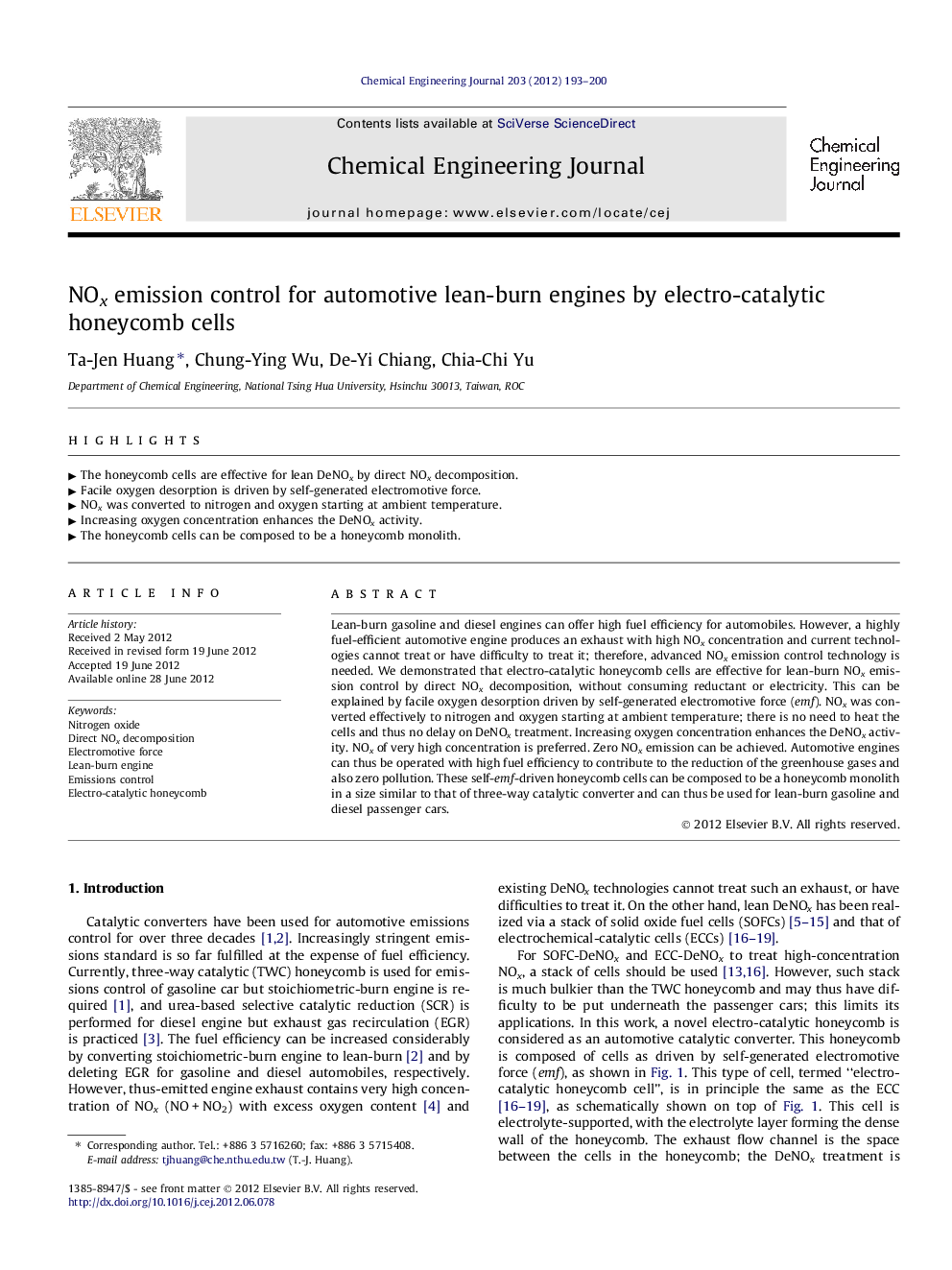| کد مقاله | کد نشریه | سال انتشار | مقاله انگلیسی | نسخه تمام متن |
|---|---|---|---|---|
| 149282 | 456430 | 2012 | 8 صفحه PDF | دانلود رایگان |

Lean-burn gasoline and diesel engines can offer high fuel efficiency for automobiles. However, a highly fuel-efficient automotive engine produces an exhaust with high NOx concentration and current technologies cannot treat or have difficulty to treat it; therefore, advanced NOx emission control technology is needed. We demonstrated that electro-catalytic honeycomb cells are effective for lean-burn NOx emission control by direct NOx decomposition, without consuming reductant or electricity. This can be explained by facile oxygen desorption driven by self-generated electromotive force (emf). NOx was converted effectively to nitrogen and oxygen starting at ambient temperature; there is no need to heat the cells and thus no delay on DeNOx treatment. Increasing oxygen concentration enhances the DeNOx activity. NOx of very high concentration is preferred. Zero NOx emission can be achieved. Automotive engines can thus be operated with high fuel efficiency to contribute to the reduction of the greenhouse gases and also zero pollution. These self-emf-driven honeycomb cells can be composed to be a honeycomb monolith in a size similar to that of three-way catalytic converter and can thus be used for lean-burn gasoline and diesel passenger cars.
► The honeycomb cells are effective for lean DeNOx by direct NOx decomposition.
► Facile oxygen desorption is driven by self-generated electromotive force.
► NOx was converted to nitrogen and oxygen starting at ambient temperature.
► Increasing oxygen concentration enhances the DeNOx activity.
► The honeycomb cells can be composed to be a honeycomb monolith.
Journal: Chemical Engineering Journal - Volume 203, 1 September 2012, Pages 193–200